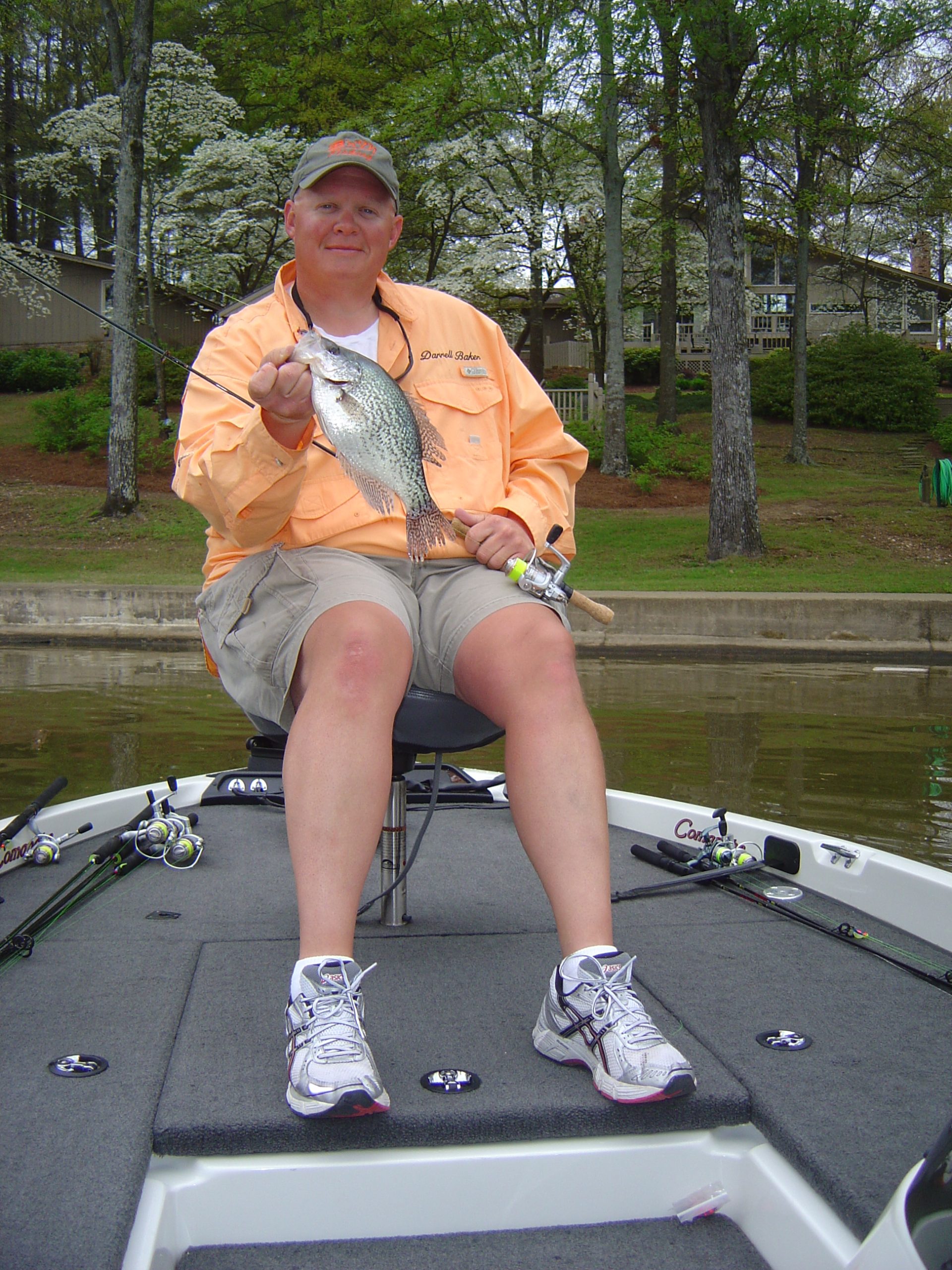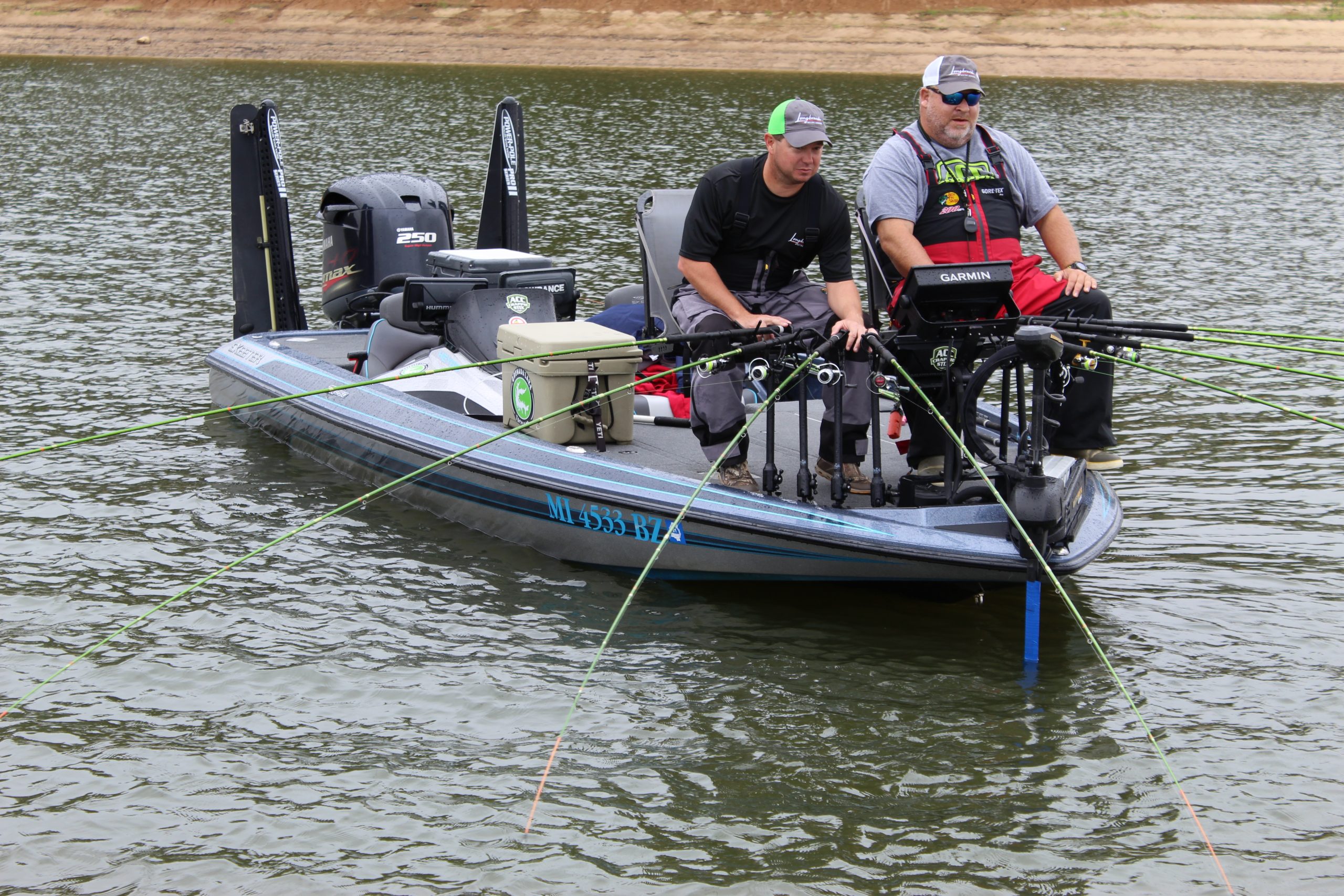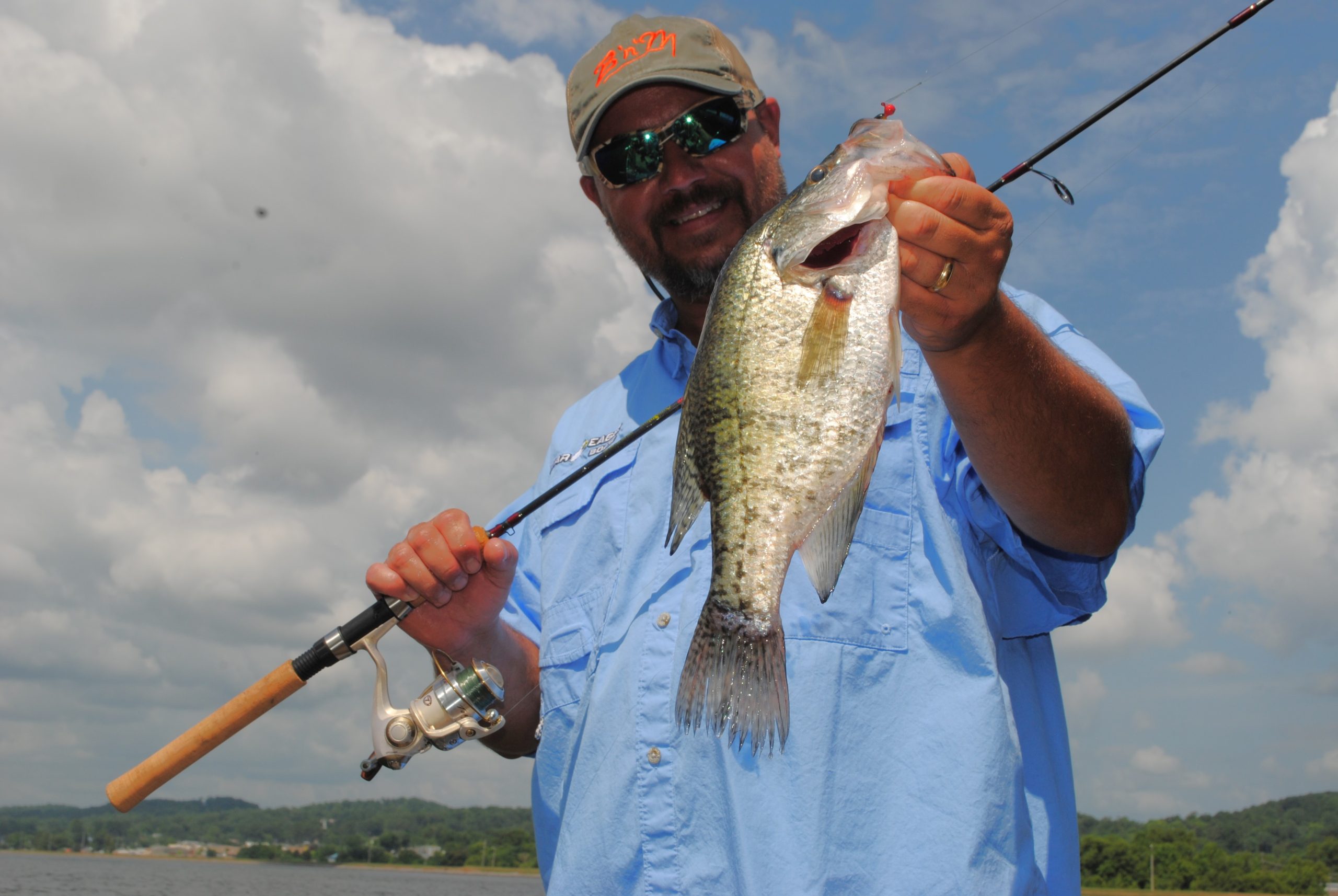With the evolution of electronics – and especially since the advent of forward-facing sonar like Garmin’s LiveScope technology, many anglers have reverted to one-pole presentations, either casting, flipping, or vertical jigging to individual fish. In particular, that approach has dominated the tournament scene in recent years. Pushed into the background of this modern era of crappie fishing are various approaches to trolling. Yet nothing has changed the productivity and efficiency of trolling presentations like long lining, side pulling, and spider rigging for crappie. The various iterations of the approach maintain their overall effectiveness. Simply put, trolling remains a deadly presentation for crappie regardless of the fishing venue.
Downplay that idea at the risk of catching fewer fish. Better still, take the advice of crappie guides who spend hundreds of days each year on the water. Guides Darrell Baker and Brad Whitehead put their own unique touches on trolling for crappie in north Alabama while guide Tim Howell deploys a multi-rod spread on the famed Big 4 lakes in north-central Mississippi. Each acknowledges the role of modern electronics in the crappie-fishing world, but trolling remains their go-to presentation on a trip-to-trip basis.
Long Lining For Crappie
For years, Baker from Weiss Lake Crappie Guides in Centre, AL, has guided clients to scores of crappie on Weiss Lake, the uppermost impoundment on the Coosa River. As the harsh winds of winter give way to better conditions in March, Baker can likely be found trolling for Weiss slabs. While he is a versatile guide adept at various crappie-fishing techniques and presentations, Baker admits long-line trolling is hard to beat in late winter and early spring.
“The fish are schooling up in the coves in the spring, getting ready for the spawn, The fish are in large schools and are usually pretty active, so they will hit a moving bait,” he said. “I think they feel like the bait is trying to get away from them, and that is what triggers them to chase and bite it.”
According to Baker, fishing conditions in March also make long-lining preferable to other approaches. Wind comes into play on a daily basis in March and a moving boat is less susceptible to being redirected by the wind.
On Weiss Lake, local regulations limit anglers to three rods each. On other fisheries, at least eight rods and occasionally more are used for long-lining. Some boats can accommodate up to eight rods in the front with four more in the back. Rods of different lengths – needed to eliminate tangles – are staggered out the front on each side.
Long-liners typically troll from about .7 mph to just over one mph. Darrell ties one or two jigs directly to the main line with a loop knot. He uses B’n’M rods and fills his reels with six pound. Gamma Optic yellow line. His “go-to” plastic is the Charlie Brewer’s Slider Co. Crappie/Panfish Grub.

“I use all six-pound Gamma because I know where my jigs are with that size line,” Baker said. “I’m fishing 1/32-oz. up to maybe 1/24-oz. jigs. I’m moving about .9 to 1.2 mph, fishing shallow in those stumps in the coves.”
Baker also knows his clients. Most of them come to Weiss looking for crappie filets. Long lining is just the right approach for them.
“It’s hard to beat a good long-lining bite in the spring,” Baker said, “and it’s an approach that any of my clients can adapt to quickly.”
Spider Rigging For Crappie
Tim Howell at Longbranch Guide Service, might practice his trolling techniques in Mississippi, but he suggests that his approach to spider rigging for crappie will catch them just about anywhere.
The monster white crappie on lakes like Grenada, Enid, and Sardis are very much affected by the vagaries of March weather. Howell said that the crappie there become lethargic, especially in post-front conditions. That mood swings demand a slower approach, and spider rigging for crappie addresses all the needs of finicky fish.
“The main reason is you can slow the presentation down to almost dead still whereas with long lining or side pulling, you’re having to move a lot faster,” Howell said. “Normally in prespawn, the fish are lazy and want a slower-moving bait in my opinion.”

Howell uses various presentations and rigging throughout the year. He finds pulling crankbaits is a hot ticket from late May through September, but he is usually slow-trolling jigs in the pre-spawn.
He uses a spread of up to eight ACC Crappie Stix 16-foot trolling rods. His favorite combination on the business end is a ¼-oz. jig head paired with a Midsouth Tackle tube-style plastics. He frequently uses two jigs, one about three feet up the main line, another about 18 inches down with a weight at the bottom. The size of the weight, which is usually ½- to one ounce, is dependent on various factors, including wind, water depth, and trolling speed.
Most of the time, Howell trolls at .3 mph to about .5 mph while spider rigging although he may reduce speed to target structure or individual fish. Later in the year, he transitions to what he calls power trolling, a similar spider-rigging presentation but with bigger bait and bigger weights, and significantly increases his speed to one mph or slightly more.
On an average day, Howell finds himself in the vicinity of other guides and anglers staring at their LiveScope screen in hopes of catching individual fish. He said that is not what his clients want. Despite the daily potential for big fish, Howell seeks to put his customers on numbers of crappie.
“For me as a guide, it’s just the easiest way to fish and the most productive,” he said. **Editor’s note: If you’re looking to upgrade your boat for spider rigging, check out Millennium Marine’s lineup of spider rigging accessories, the Spyderlok series.
Side Pulling For Crappie
Crappie fishing guru Brad Whitehead spends a lot of time fishing and guiding on Pickwick Lake and the Bear Creek Development Authority lakes in northwest Alabama and takes a different approach to trolling. He said the uniqueness of side pulling creates a different presentation for pressured fish. He also finds himself side pulling in different areas not covered by long liners or spider riggers.
He fishes from a boat specifically designed for side pulling with a trolling motor mount in the middle on the right side. Whitehead controls the speed and direction with the trolling motor but frequently fishes with the wind.
“We’re side-pulling in a War Eagle 754VS, using 10 or 11 rods with a mixture of hair jigs, (Charlie Brewer) Sliders, and curly tails,” Whitehead said. “All the rods are in clean water all day long, meaning it probably hasn’t been fished by other trollers. I’m pulling a consistent .7 to .9 mph.
“One of the things side pulling brings to the table is that you’re able to go with the wind, cover water, catch the active fish on the move, whether they are coming off the bed or feeding up before the spawn.”

He uses B’n’M rods, nine foot models in the back and middle and 10-footers in the front. Whitehead sits in the back of the boat, and the longer rods in the front allow for easier bite detection. The rods, called The Difference, were designed by legendary Pickwick guide Roger Gant, from whom Whitehead learned side-pulling.
Whitehead rigs a vertical presentation that includes one jig at the end of the main line, another about a foot above, and ⅓-oz. split a foot above the top jig. He said the weight “takes all the guesswork out of determining how deep your lures run. I’m able to count down to suspended fish and put the lures in their faces.”
Another benefit of side pulling is the opportunity to target deeper fish. Many of the bigger pre-spawn females rest in deep water until the urge to move shallow hits them.
“As a side puller, I like to target slightly deeper water than the typical trollers,” Whitehead said. “Most people would say 15 feet or under for most pre-spawn fishing. I’m out in 20, 22, or 23 feet of water.
“I’m catching slightly later fish and usually slightly bigger fish,” he added.
Final Thoughts
Regardless of the trolling presentation, long lining, spider rigging, or side pulling, the various approaches remain a fixture among knowledgeable crappie fishermen. Yes, it may be overshadowed by other trends, but any type of multi-rod trolling provides an effective means of targeting large numbers of crappie.
Full Disclosure: This post may include affiliate links. There’s no extra charge to our readers for using these.




